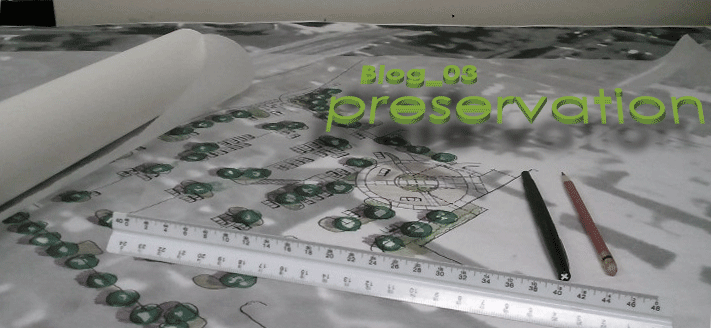Landscape Architecture for Landscape Architects › Forums › GENERAL DISCUSSION › Old vs. New
- This topic has 1 reply, 3 voices, and was last updated 13 years, 10 months ago by
Matthew Latham.
-
AuthorPosts
-
February 10, 2012 at 3:30 pm #158622
 Joshua ElamParticipant
Joshua ElamParticipantPlastic silverware is used by a person on average for 30 minutes, a new phone usually two years, a car for around 5 to 6 years. We are in the age of the disposable, where products are cheap and just thrown away. It makes me wonder if communities are so different.
If there is one thing that will make people take good care of what they have, it is a shrinking wallet. Local governments are the same, and we are seeing the results in the revitalization of historic zones. Tight budgets have all but ceased the practice of destroying the existing infrastructure to make room for the new. Towns are re-setting, re-structuring and enhancing the historic areas to compete toe-to-toe with big box regional centers. Not only is the “Old” now new, it is also hip. This need for towns to preserve the existing also preserves the identity and character that we sometimes seem to forget. Dense mixed use, high walkability, alternative transportation, local shops and active inhabitants are the ingredients. The result is quality of life.
At least in my humble opinion.
-Josh Elam
February 13, 2012 at 9:45 pm #158624Matthew Latham
ParticipantIt’s a nice sentiment expressed here, but I think the reality is quite different, especially in these hard economic times. Although I agree that it is a good idea to redevelop existing historic centers and take advantage of existing infrastructure, a combination of existing conditions and government regulations make this not feasible economically. There are several examples of this… Historic preservation laws make it difficult or impossible to demolish historic structures that are not financially feasible to bring up to today’s building and accessibility codes. Either the codes or the preservation laws need to be relaxed, otherwise developers are in a straitjacket. Environmental laws make it difficult to redevelop brownfield sites without expensive studies and cleanup efforts. And, here in Cincinnati and other cities with older combined sewer systems, EPA consent decrees essentially prohibit additional development in areas that are tributary to combined sewer overflows — which is a good thing for water quality, but a bad thing for the redevelopment of the center city. Zoning laws make it hard to repurpose old structures for new uses.
Essentially, I think your comment proposes a nice idea, but to make it work in reality, a lot of work and some tough decisions will be required. As planners, we need to educate our government leaders about the land use impacts of their decisions.
February 13, 2012 at 11:35 pm #158623 Jason T. RadiceParticipant
Jason T. RadiceParticipantAdd in that many of these historic areas are in econimically depressed areas, such as small towns in the northeast and upper midwest, where massive losses in industry and popultion over the decades mean much of the historic building stock, both industrial and residential, is essentially abandoned and left to rot beyond any point of salvation. That, or they are burned to the ground by squatters. Especially true of residential, the lack of proper maintenance, stripping of historc fetaures in favor of less maintenance and cheaper materials (small vinyl infill windows and cheap siding) further degrades the worthiness and ROI of renovation. There are many cities in the northeast where 60’s style “urban renewal” is practiced, where buildings are just ripped down because of their state of disrepair, or the neighborhoods are so bad, nobody with any money that would potentially want to do a renovation, will.
-
AuthorPosts
- You must be logged in to reply to this topic.



